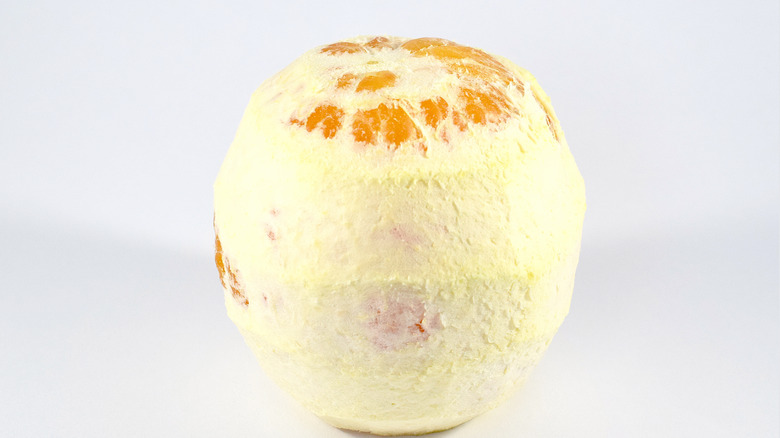The Boiling Method To Easily Remove The White Pith From Oranges
If we asked you what your favorite part of an orange is, you'd likely say the juicy segments inside or the vibrant and colorful zest. The pith, however, often yields an entirely different reaction. A dense, white barrier between peel and fruit, the pith helps keep the orange neatly held intact. While it no doubt serves a purpose, it can also be a bit of an eyesore, yet, removing it is easier said than done. That's where an unconventional peeling method comes in. Boiling might just put an end to pith-peeling problems.
Regardless of the fact that WebMD notes that orange piths are actually quite healthy, loaded with vitamin C, calcium, and fiber, many despise the lacy, leftover membrane. Some argue that it's tasteless, and others claim it's bitter. Beyond flavor, the pith also presents textural challenges. Slightly spongy and incredibly stringy, it can detract from enjoying succulent citrus segments, significantly ruining your snacking pleasure. Not to mention that visually speaking, the pith can also make oranges (but, also mandarins) look less than presentable. That's why in most cases, removing the pith is a must. For an effective and efficient de-pithing technique, put down the knife and reach for the saucepan.
Boil, but only briefly
Using a knife might be the tried-and-true method of removing citrus piths, but it can often leave behind a fair bit of the membrane. Alternatively, using a tweezer may be the best solution, however, it's also incredibly time-consuming. Luckily, there's another method that you might not have considered. To simplify pith-peeling, give oranges a quick boil.
Though it might sound odd, boiling softens citrus peels and allows the coarser pith to stay attached to it rather than to the more delicate flesh. Allowing for easier and cleaner peeling, simply submerge oranges inside a saucepan of boiling water. After a few seconds — any longer and citrus will start to cook — the fruits can be removed and set aside to cool. Once they're able to be handled, use a knife to slice off the bottom and top of the orange before vertically scoring the sides. Use your fingers to slide away the peel and reveal a mostly pith-free orange. Any remaining strands can easily be removed with a knife.
Want even more aesthetic citrus that's entirely void of membrane? Holding a peeled and de-pithed orange in your hand, use a sharp knife to cut close both sides of the membrane and release the perfect segment. Since things can get pretty juicy, it's wise to work over a bowl so that segments and juices can be collected without making a mess. All that's left to do is figure out how to put those citrus pieces to use!

